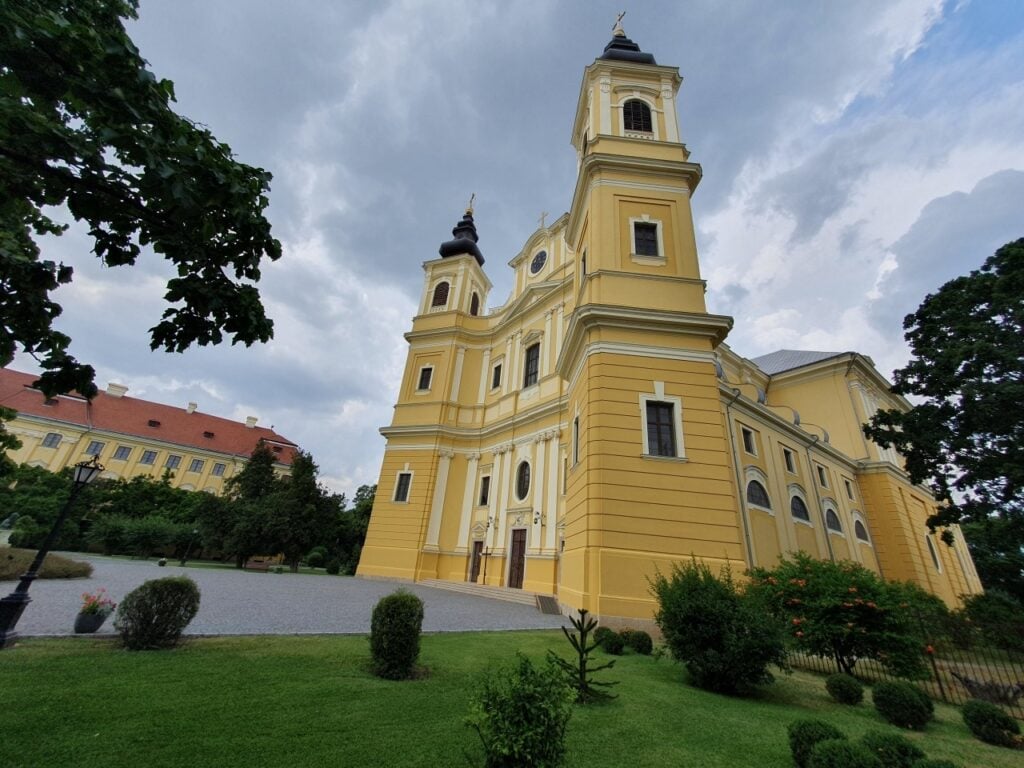Some photos of the churches of Oradea and other Christian religious places.
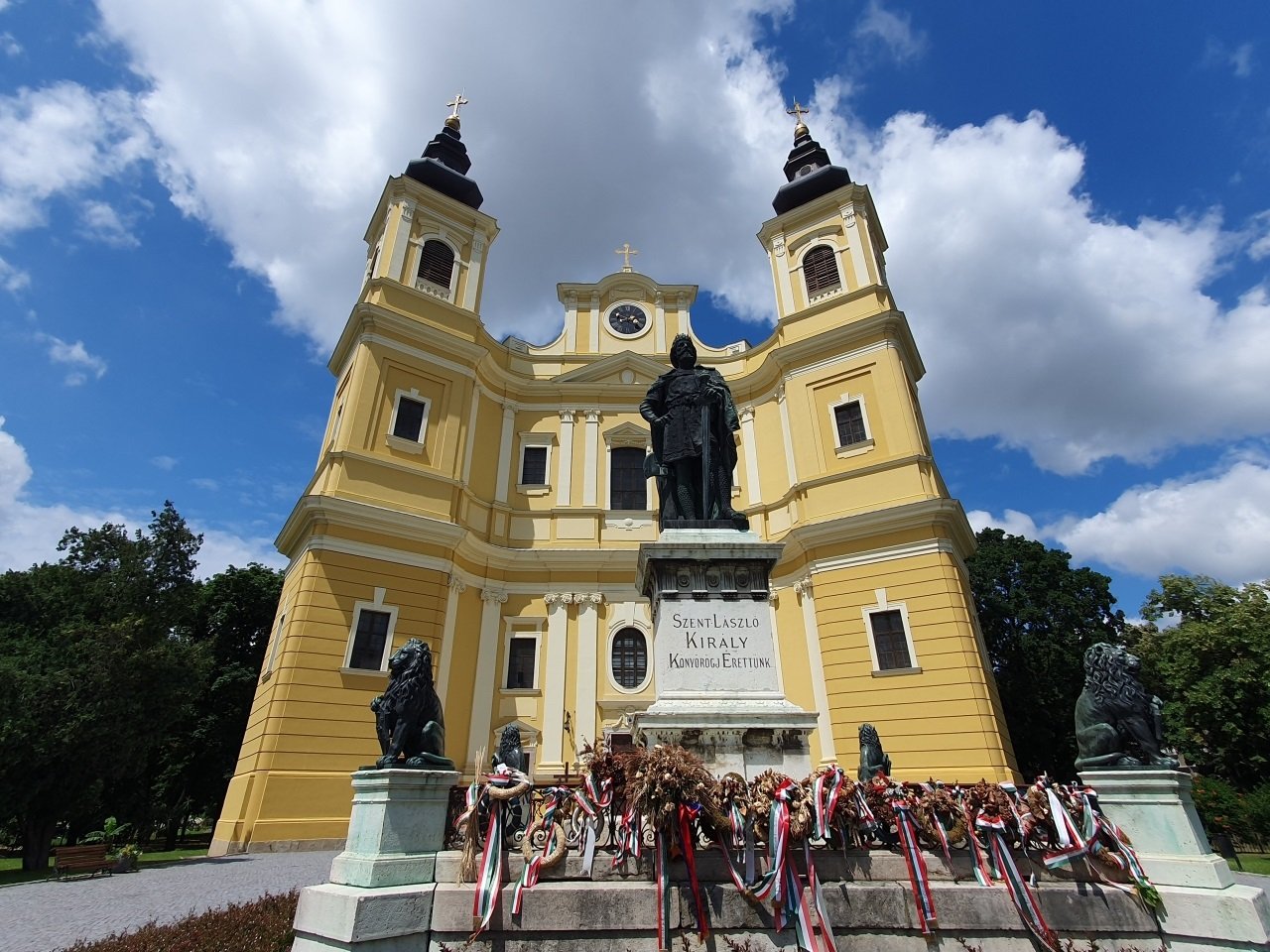
St. László (nowadays St. Mary) Roman Catholic Cathedral & Basilica (built in 1750) is probably the most famous church in Oradea, a known place of pilgrimage because it is built on the place of a former cathedral, where in 1116 was buried King Ladislaus I of Hungary & Croatia (year 1095). This king was later sanctified as St. Ladisalus.
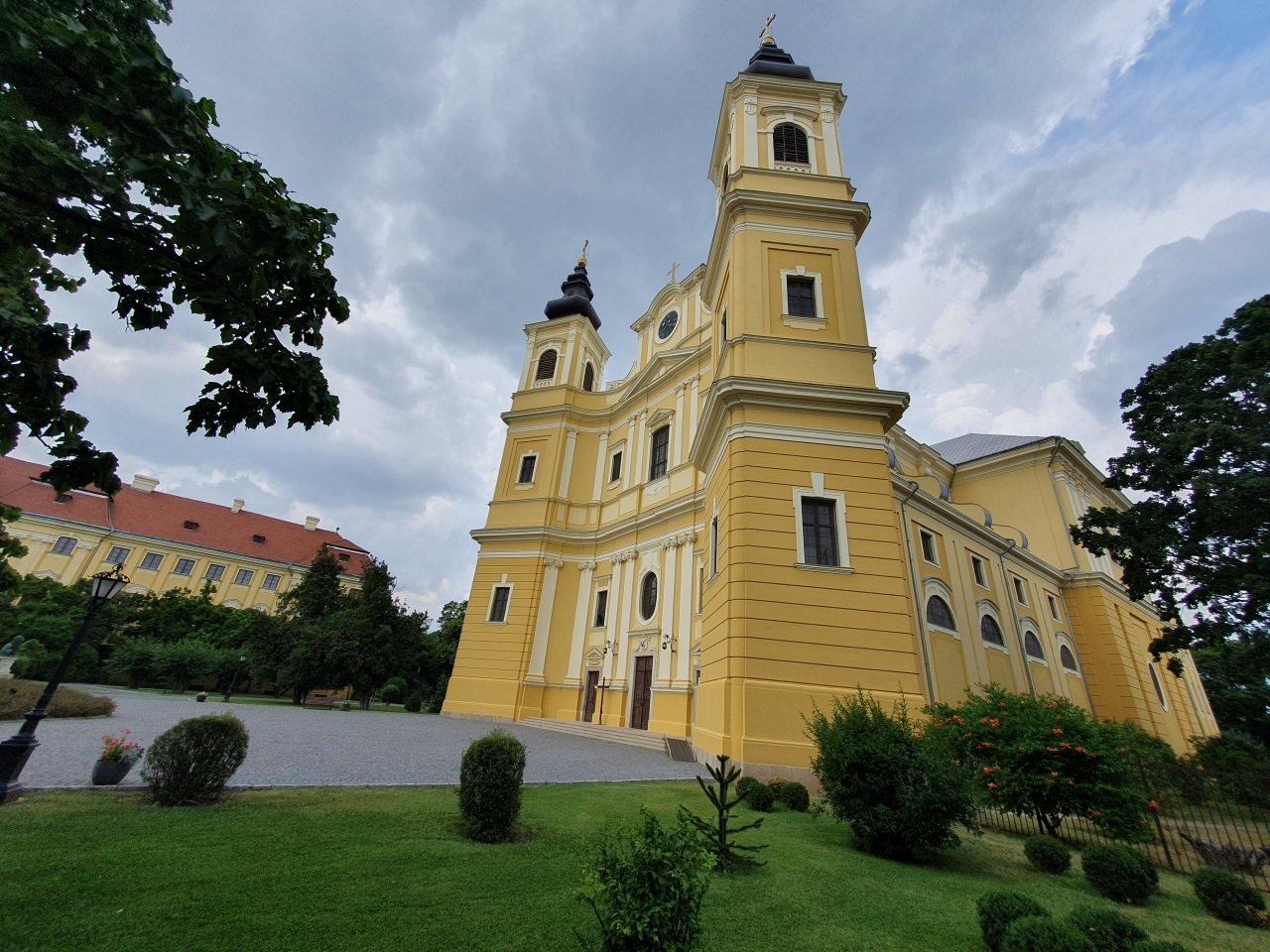
This ancient cathedral, destroyed by Mongols and Turks, was also the burial place of Stephen II, King of Hungary & Croatia (year 1131), Andrew II, King of Hungary & Croatia (year 1235), Fenenna of Kuyavia, Queen of Hungary (year 1295), Beatrice of Luxembourg, Queen of Hungary (1319), Mary of Anjou, Queen of Hungary & Croatia (year 1395) and Sigismund of Luxembourg, Holy Roman Emperor and King of Hungary, Croatia, Germany & Bohemia (year 1437). This is a beautiful list and explains why part of Hungarian, Croatian and Central European history remains in Transylvania and Romania.
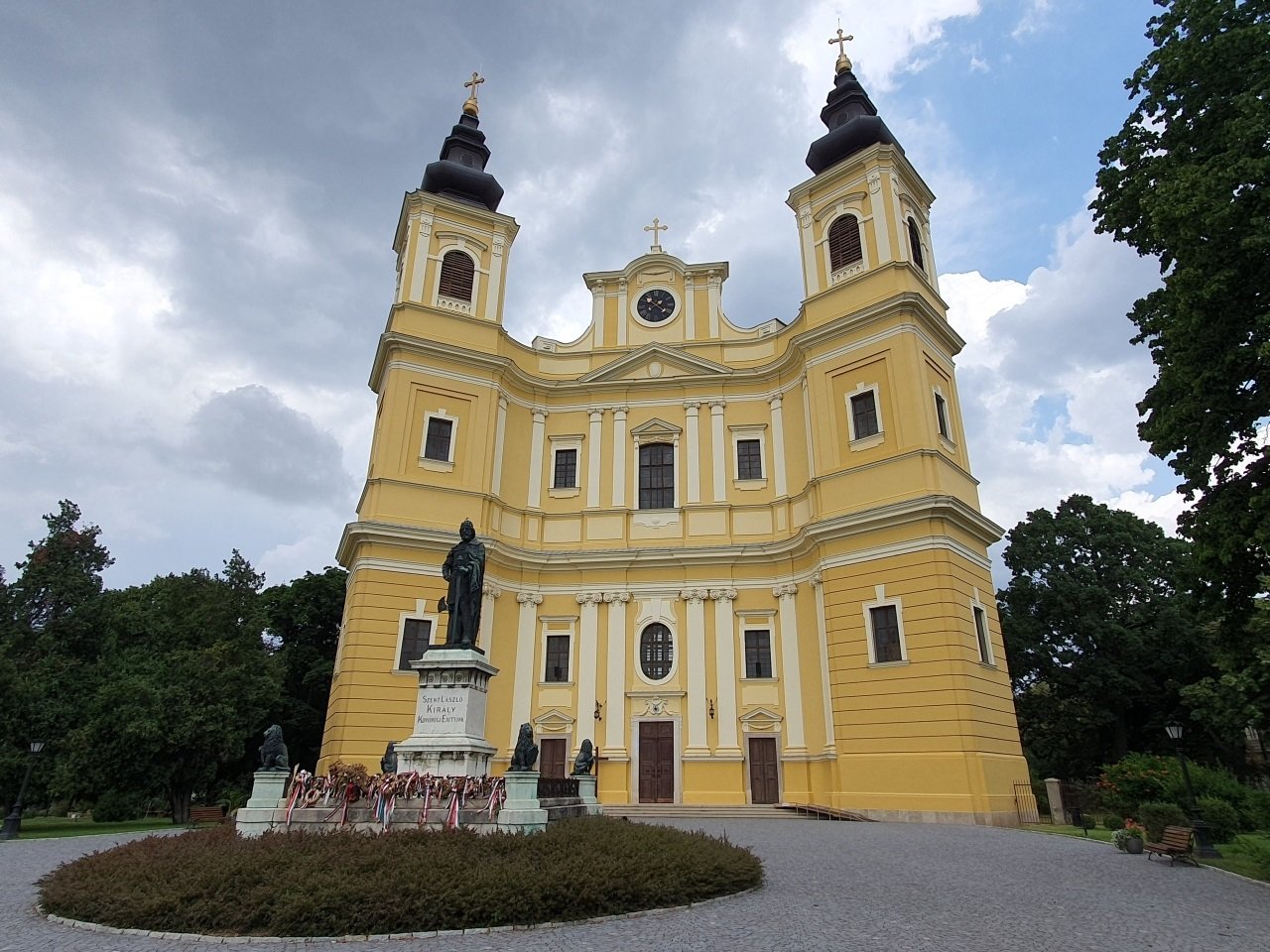
The cathedral is the largest Baroque church in Transylvania and Romania. The basilica also contains the relics of King Saint Ladislaus. The surrounding park has a special atmosphere, a mix of medieval and spirituality vibes. It is my favorite place in Oradea.
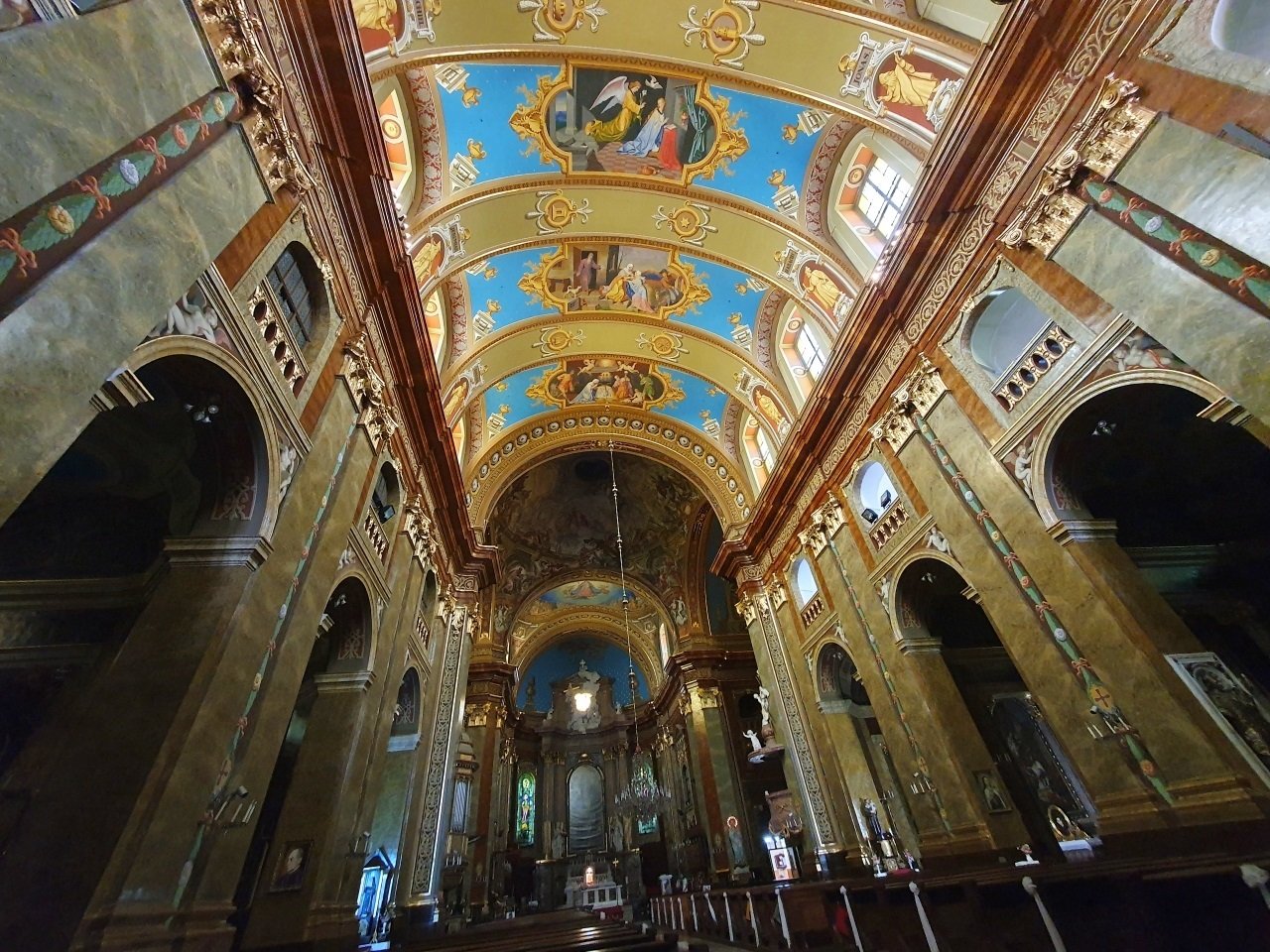
A glimpse of the interior.
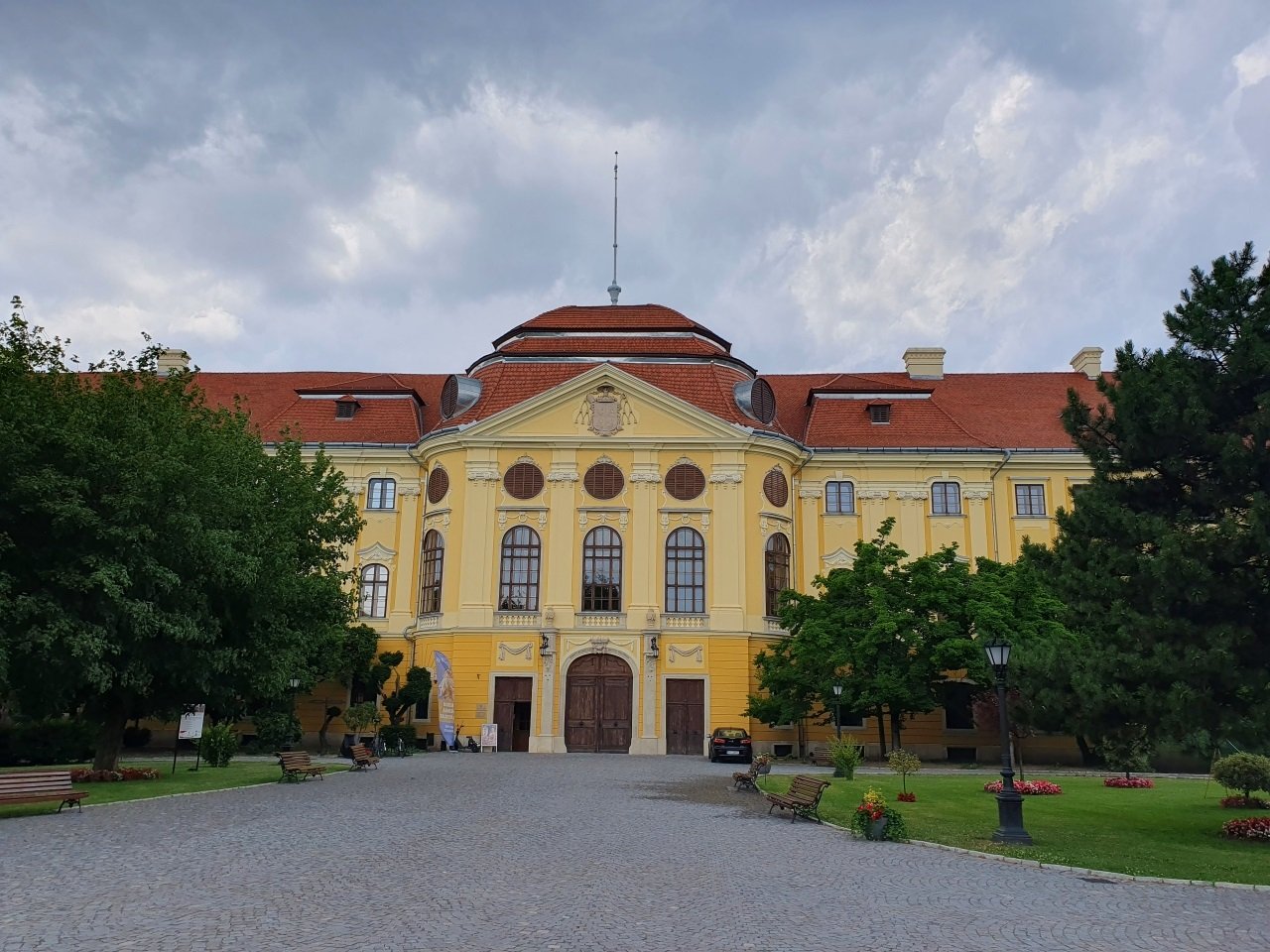
Next to the basilica is the Baroque Palace of Oradea, also known as the Roman Catholic Episcopal Palace (built 1762). It is the seat of the Catholic Diocese of Várad and nowadays is also a museum.
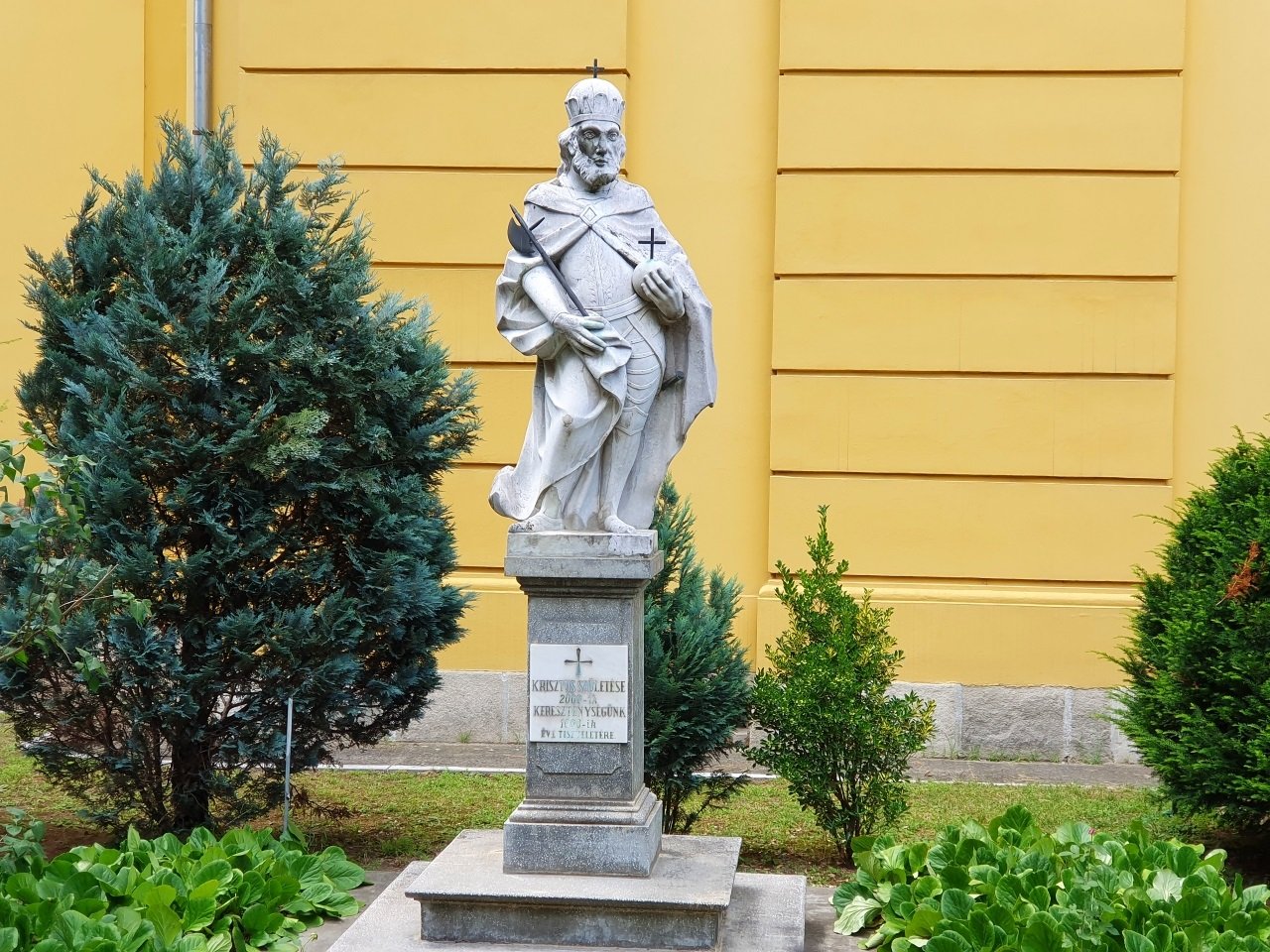
Next to the basilica is the Baroque Statue of St. László of Hungary, in a good shape nowadays, as it was buried for 52 years in the ground so as to be protected by the… Romanians…
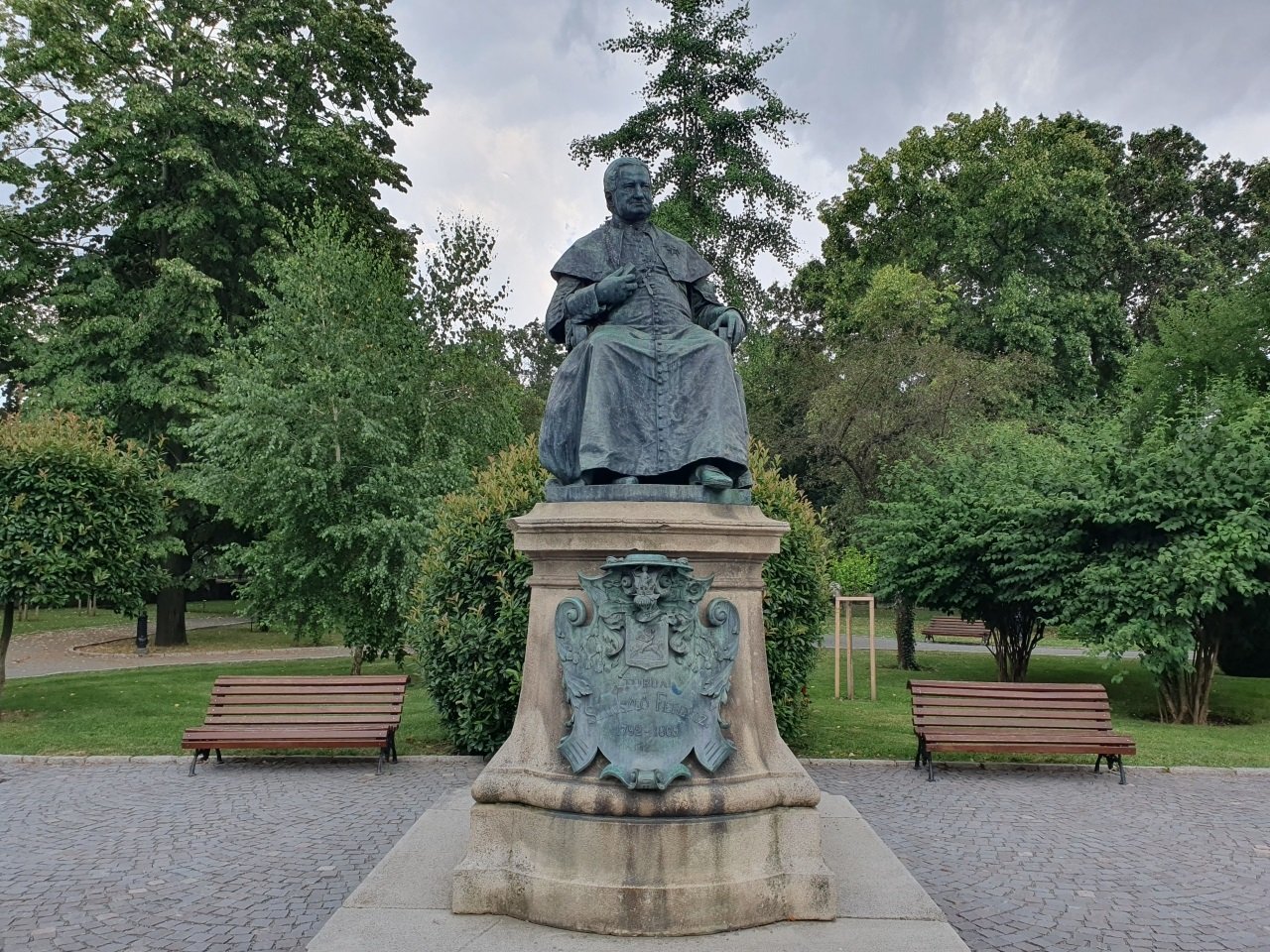
The statue of Bishop Szaniszló Ferenc of Nagyvárad (1896), opposite the basilica.
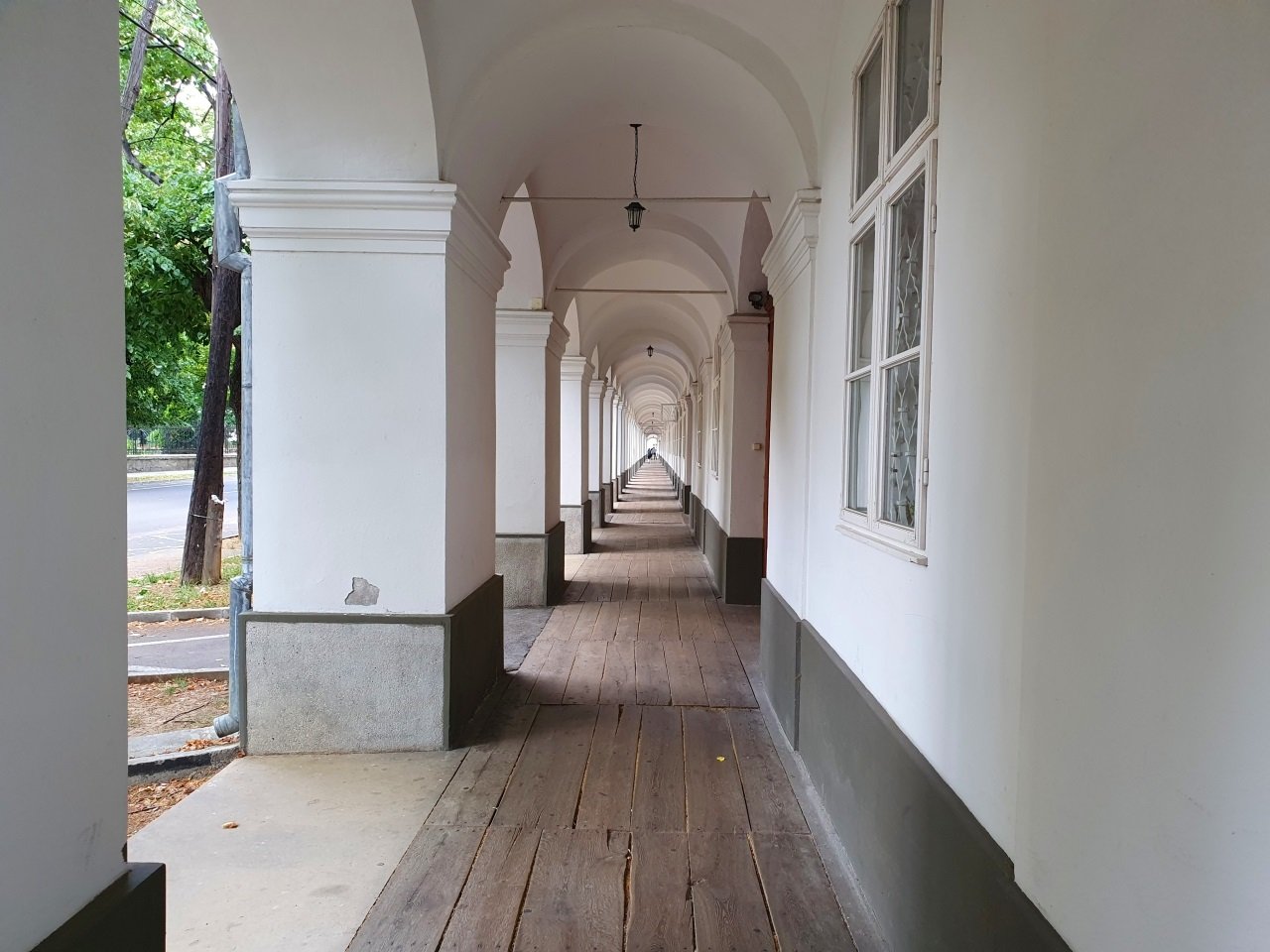
The Canon’s Row (Șirul Canonicilor), unique in Romania. The 253 m long corridor consists of 56 pillars and connects 10 buildings. It served many purposes: monastery, nunnery, religious residence, now library, book store and cultural place.
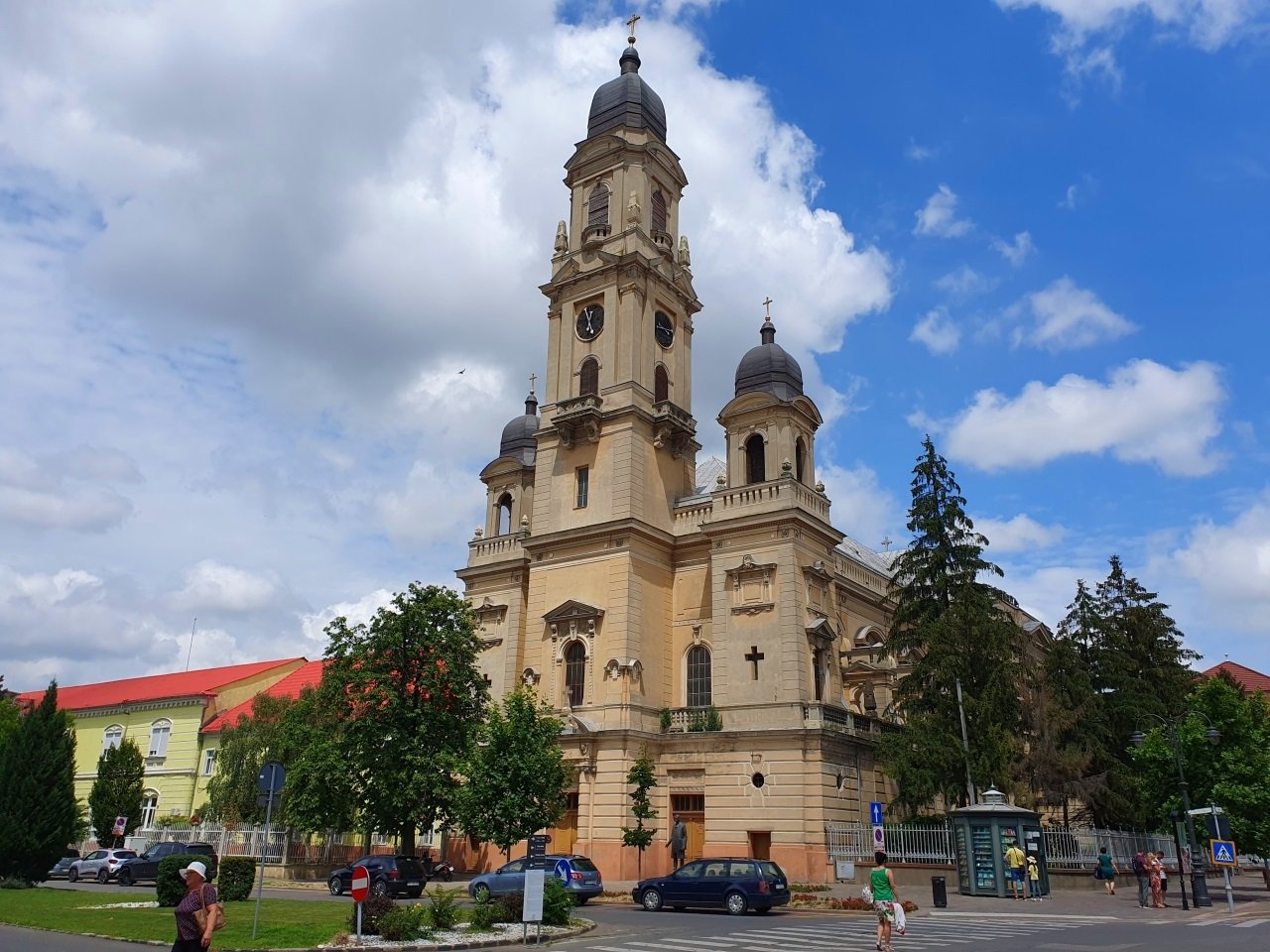
Now, approaching the city center, we encounter the Outpouring of the Holy Spirit Parish Church in Olaszi (former Franciscan Church, built in 1748, then rebuilt in 1903 in the eclectic & neo-Renaissance styles).
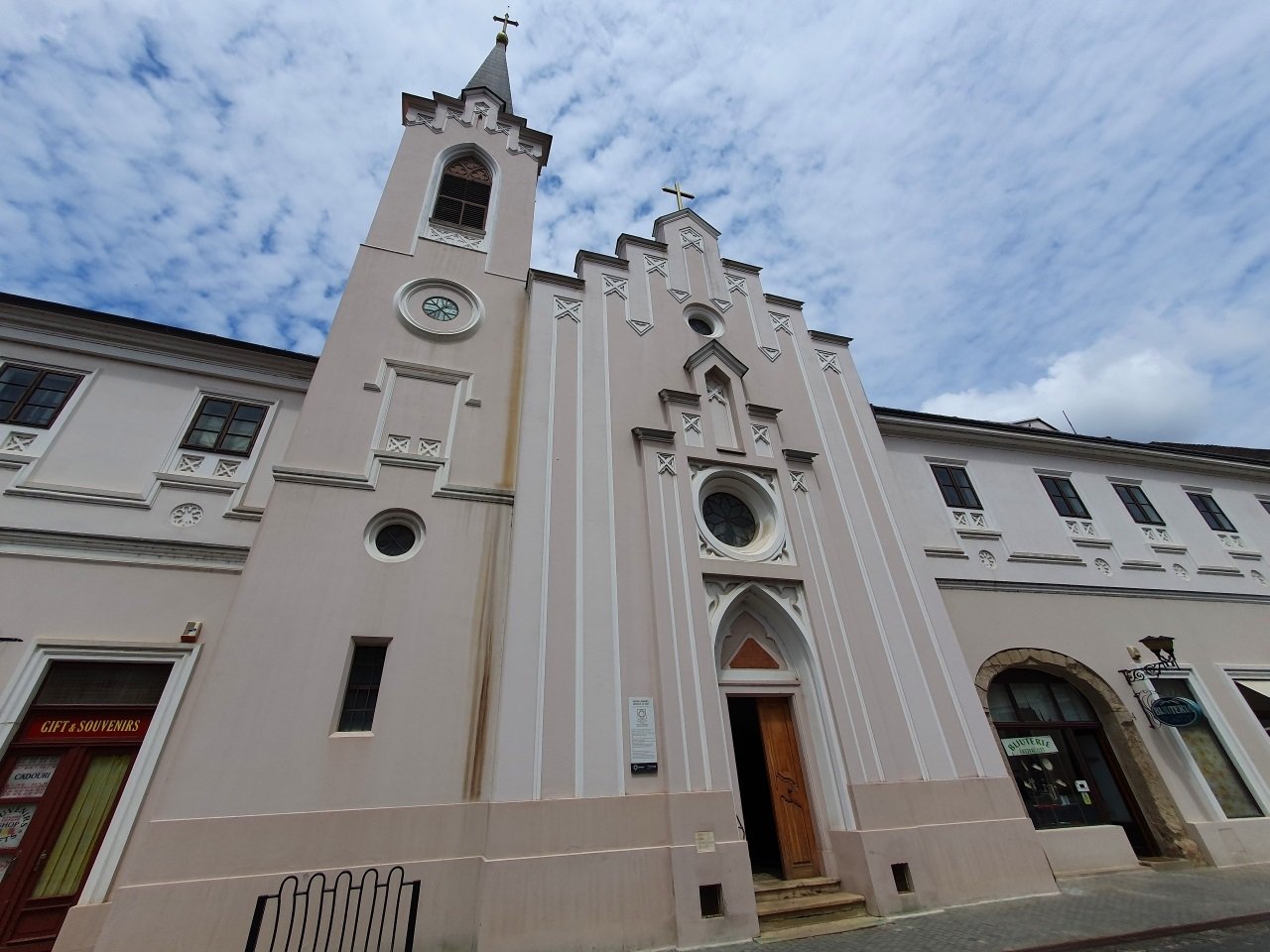
St. Anne Church and former Ursuline Convent (Biserica Ursulinelor, built in 1773).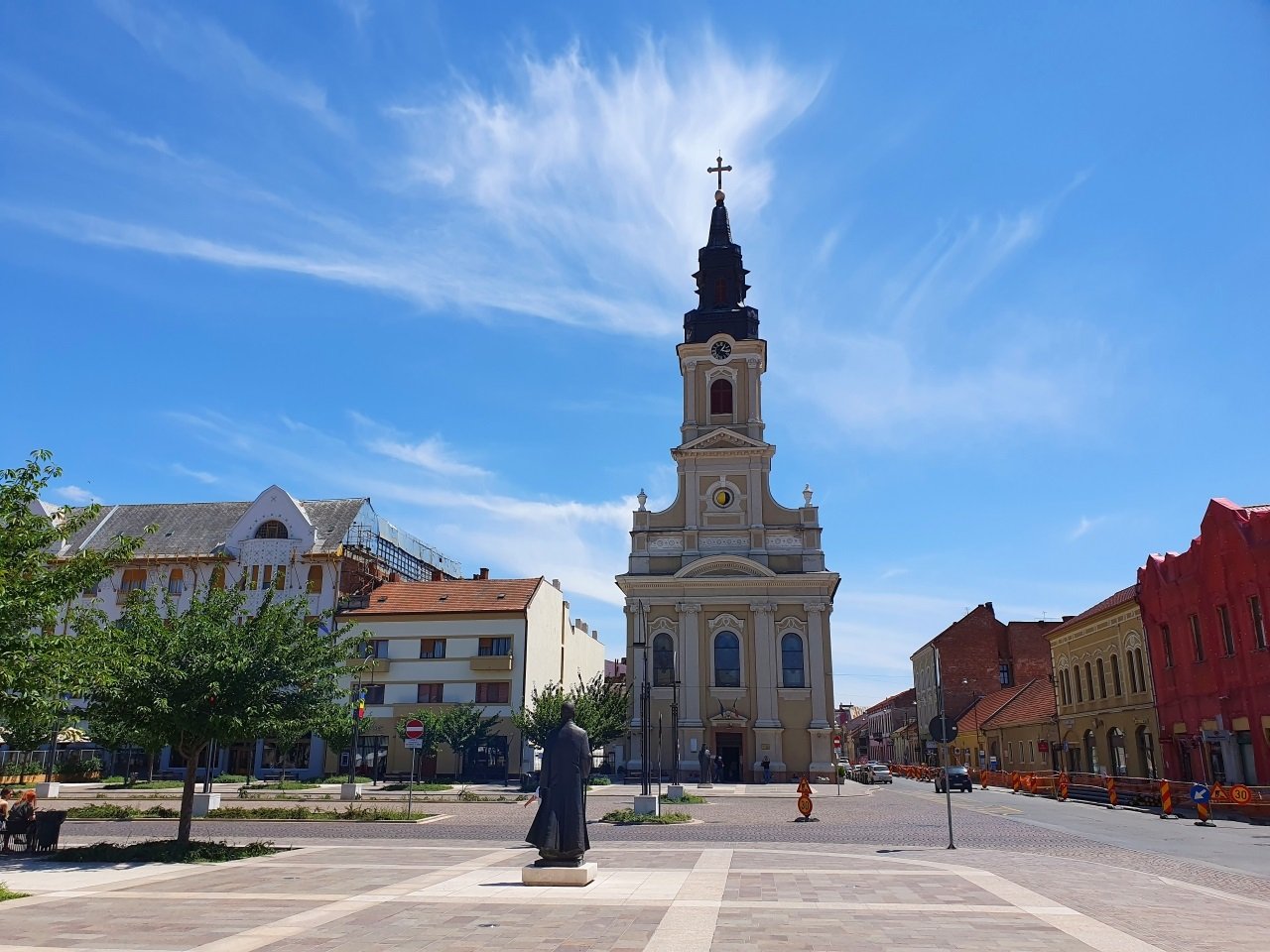
Moving to the central square of Oradea, here is the Moon Church (built 1784).
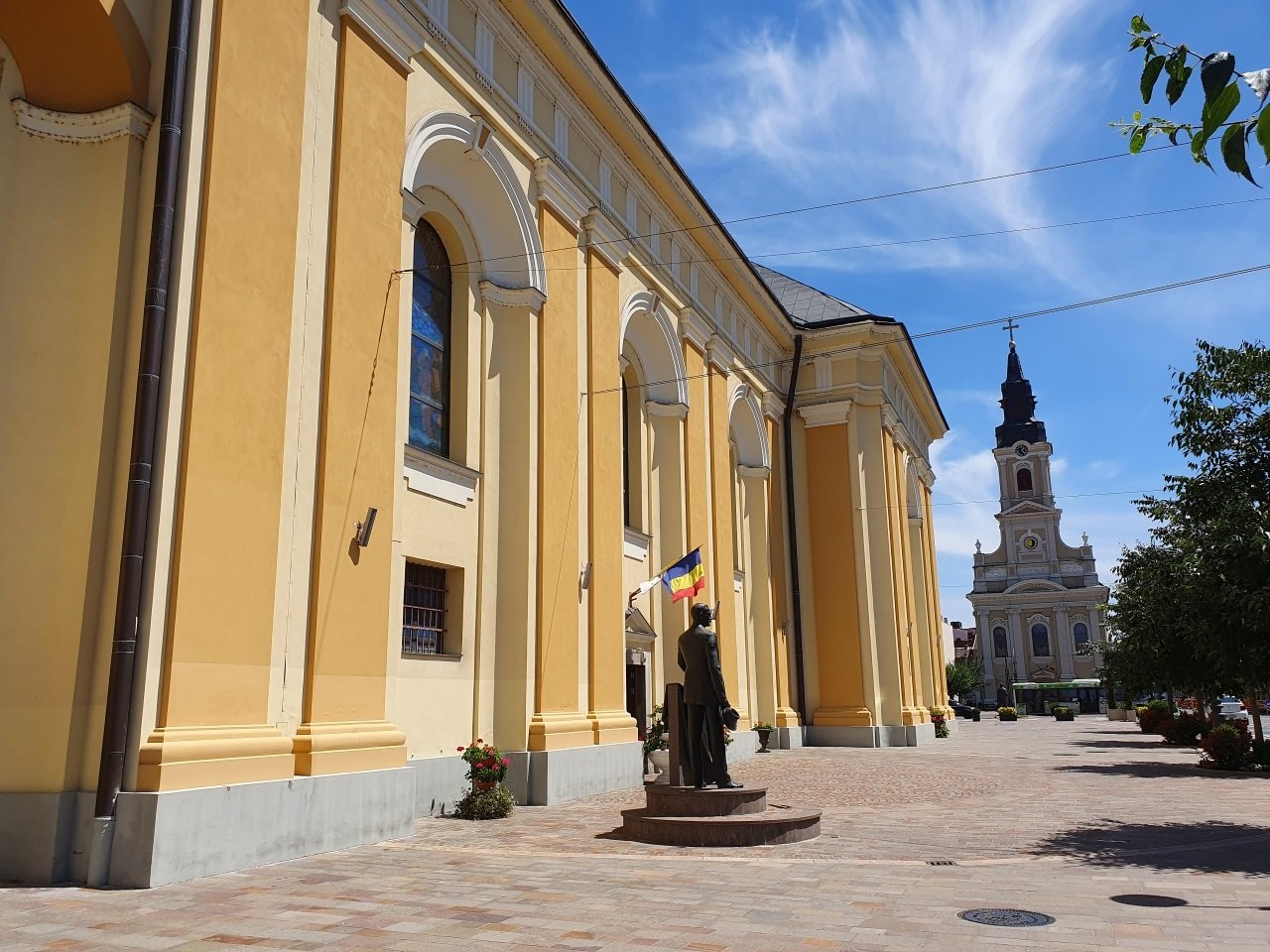
The Moon Church seen from the St. Nicholas Greek Catholic Cathedral.
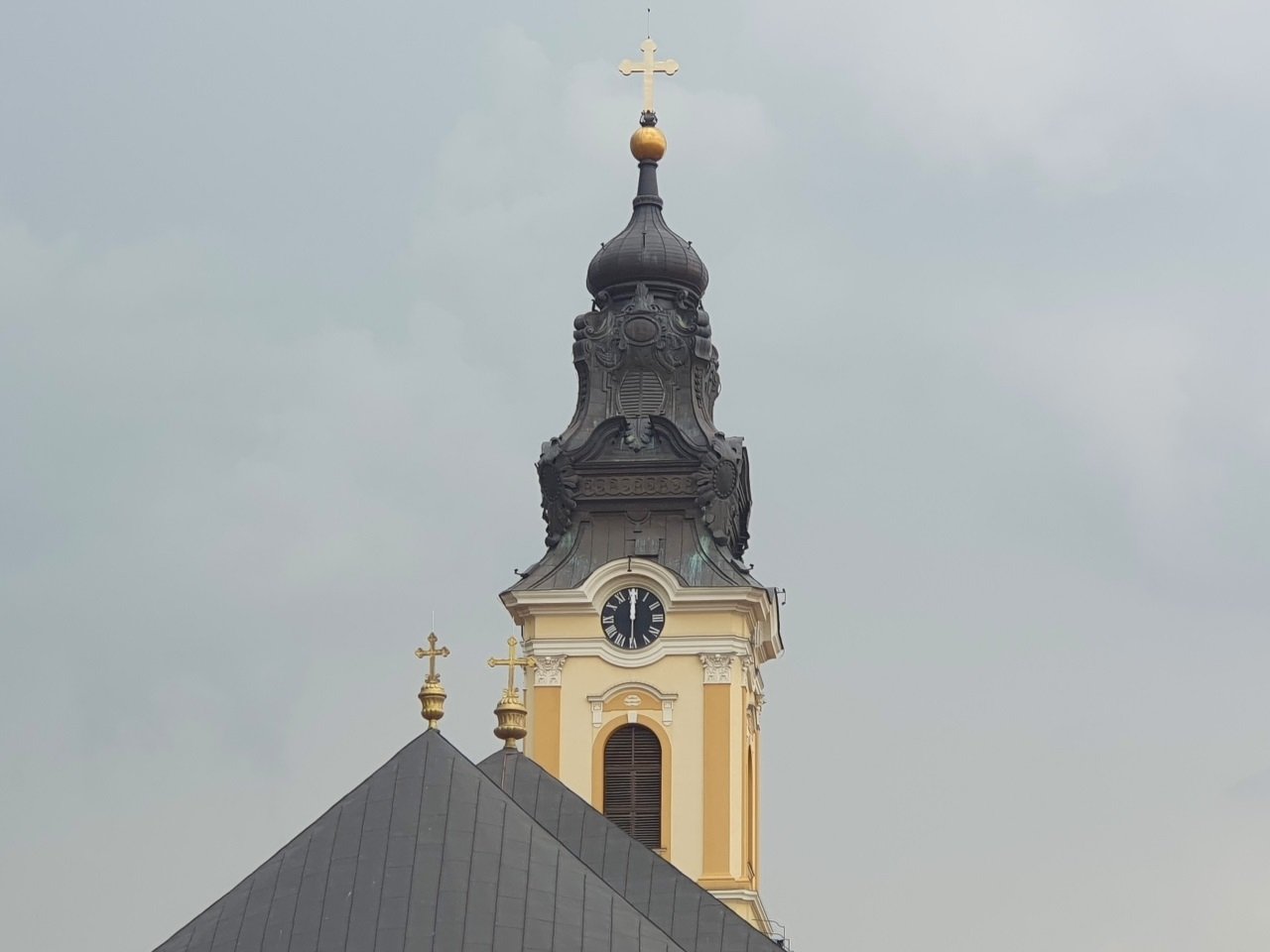
A detail of the tower of St. Nicholas Cathedral, seen this time from the Mood Church.
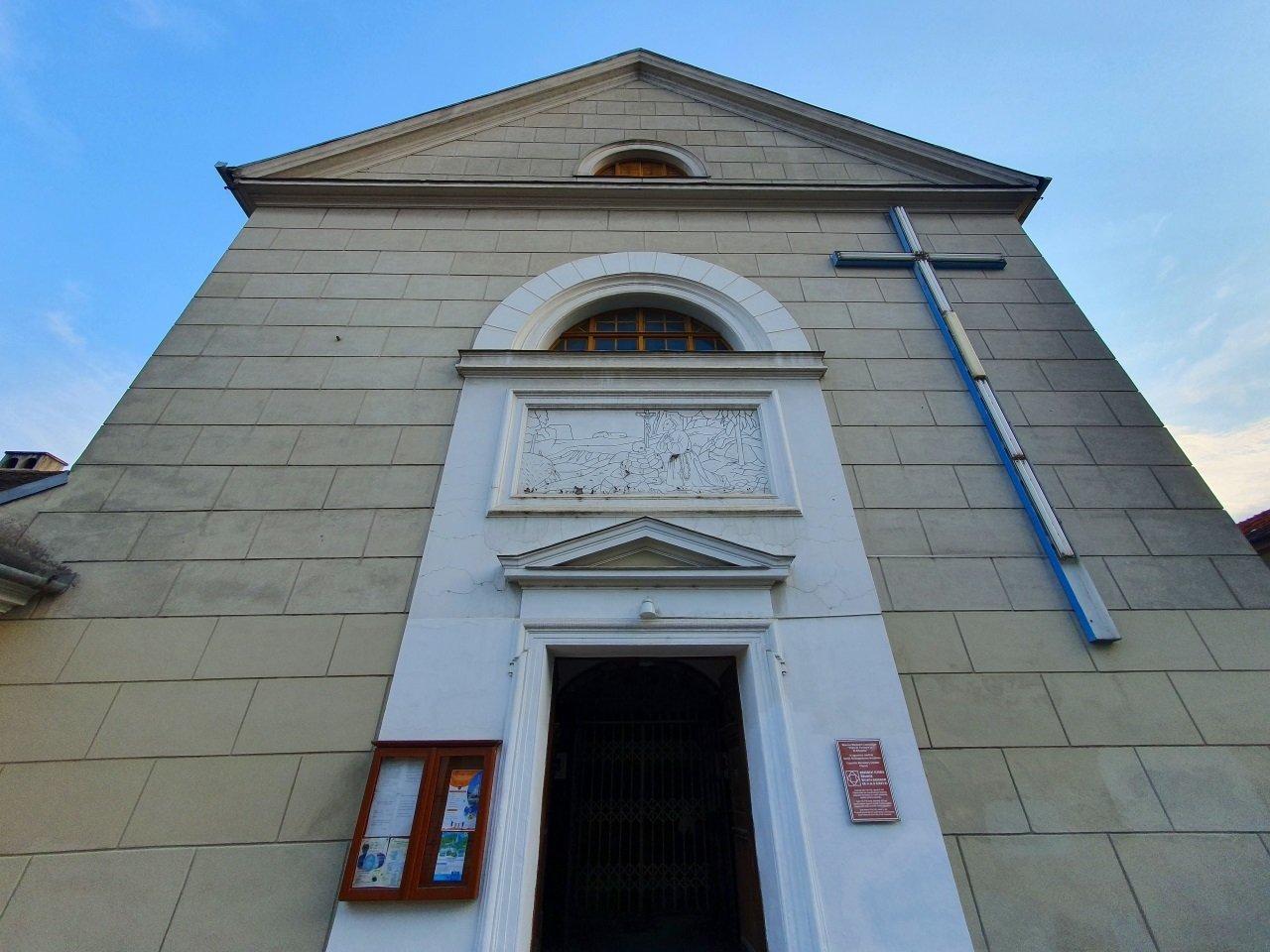
Our Lady of the Sickle Capuchin Church (built 1734).
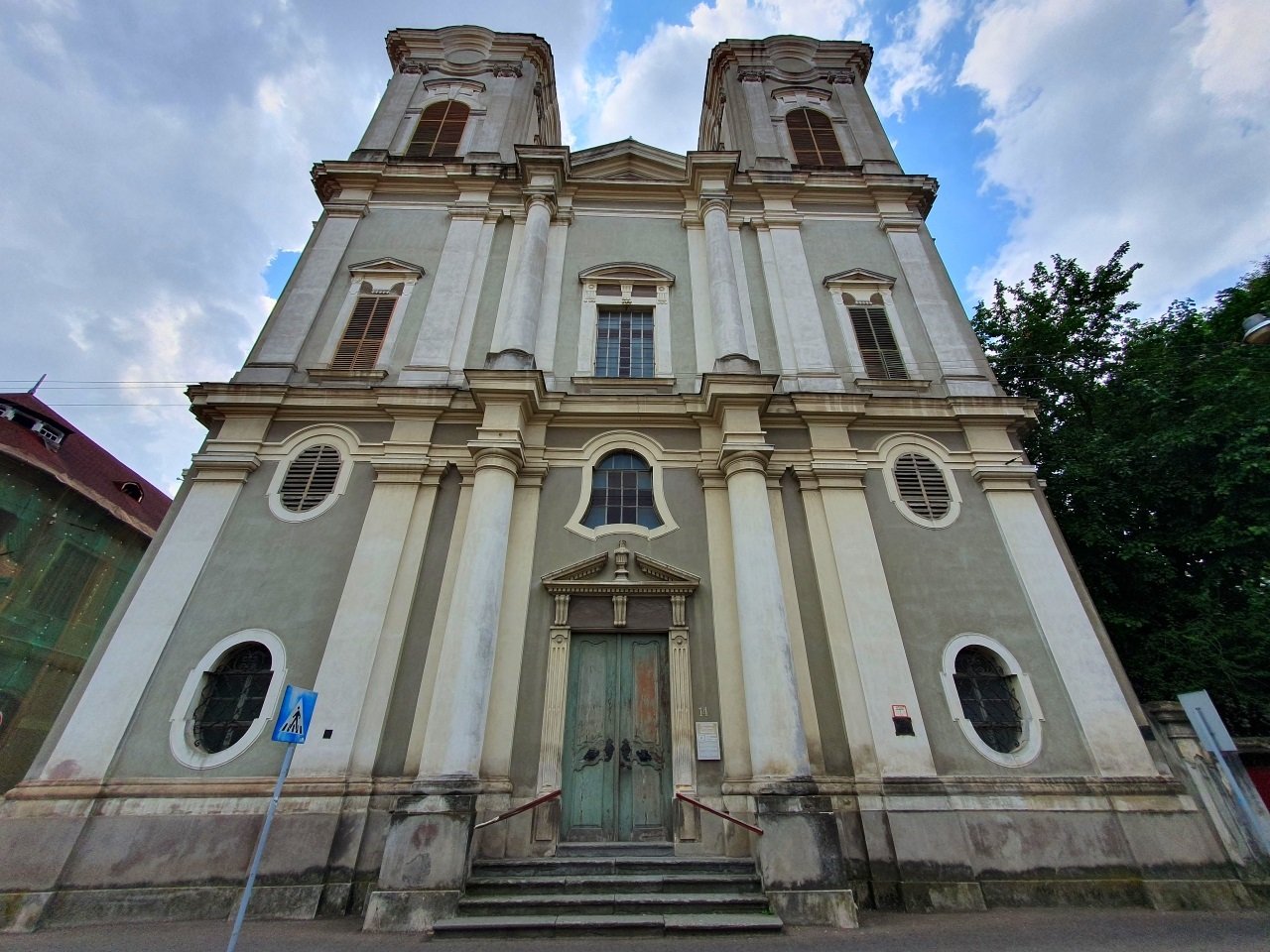
Our Lady of Sorrows Premonstratensian Church (former Pauline Church, built around 1741). The Premonstratensians (the Order of Canons Regular of Prémontré, from France) have an interesting story and their traces are very scarce in Romania, having only 3 other churches (monasteries) in Brasov, Sibiu and another one in Bihor County, completely in ruin. I tried several times to visit the interior of this church but it seems also to be in decay and utter forgetfulness… The college next to it, apparently one of the best in Oradea, is in such a dire condition that looks like being haunted by ghosts…
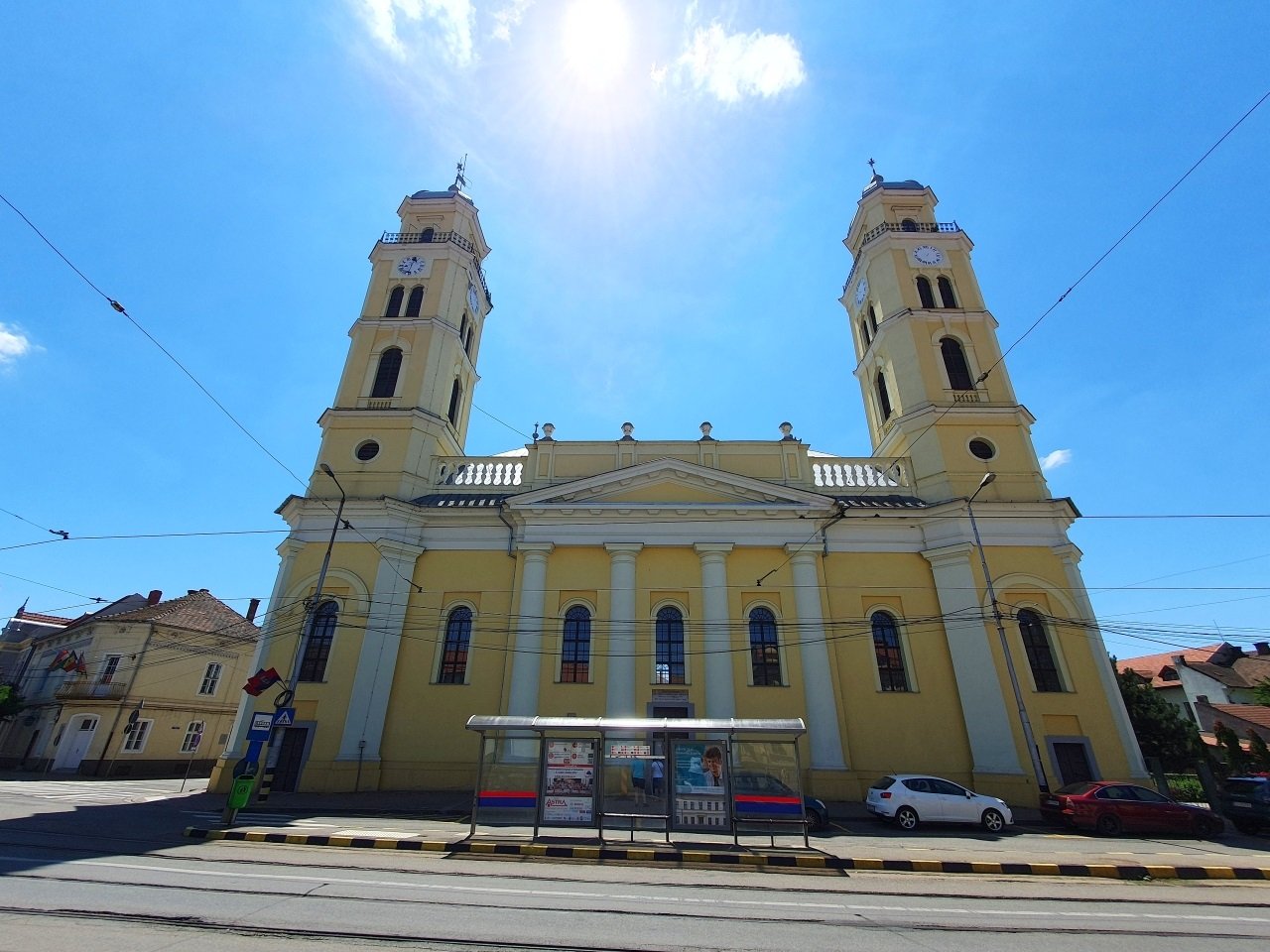
The Calvinist Church in Várad-Újváros (built in 1835). And typically to Reformed churches, it was closed.
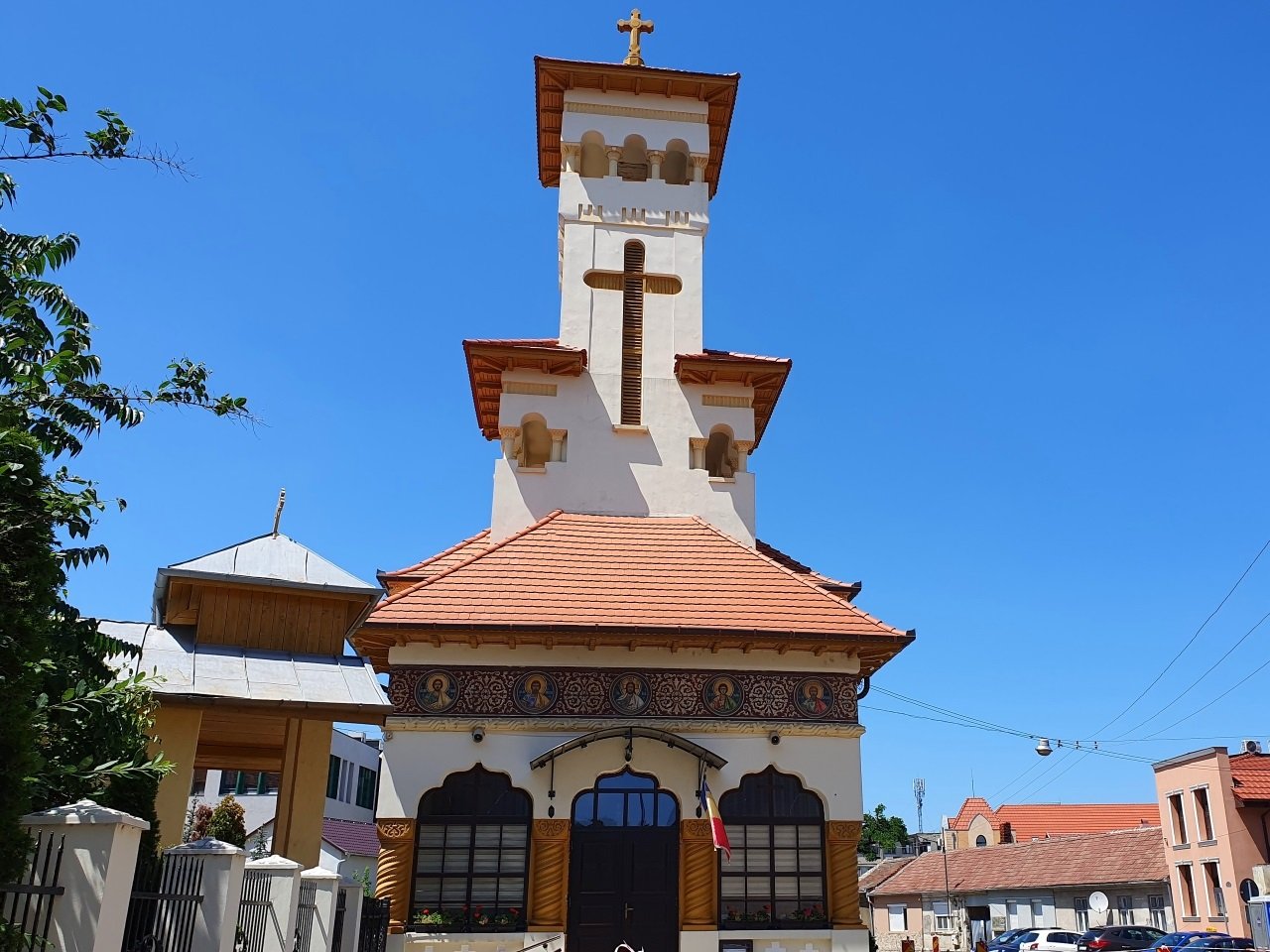
The Annunciation Orthodox Church in Várad-Újváros. Built in 1728, former Capuchin church until 1742, then Greek Catholic Church until 1948, then finally Orthodox Church until today. What a journey!
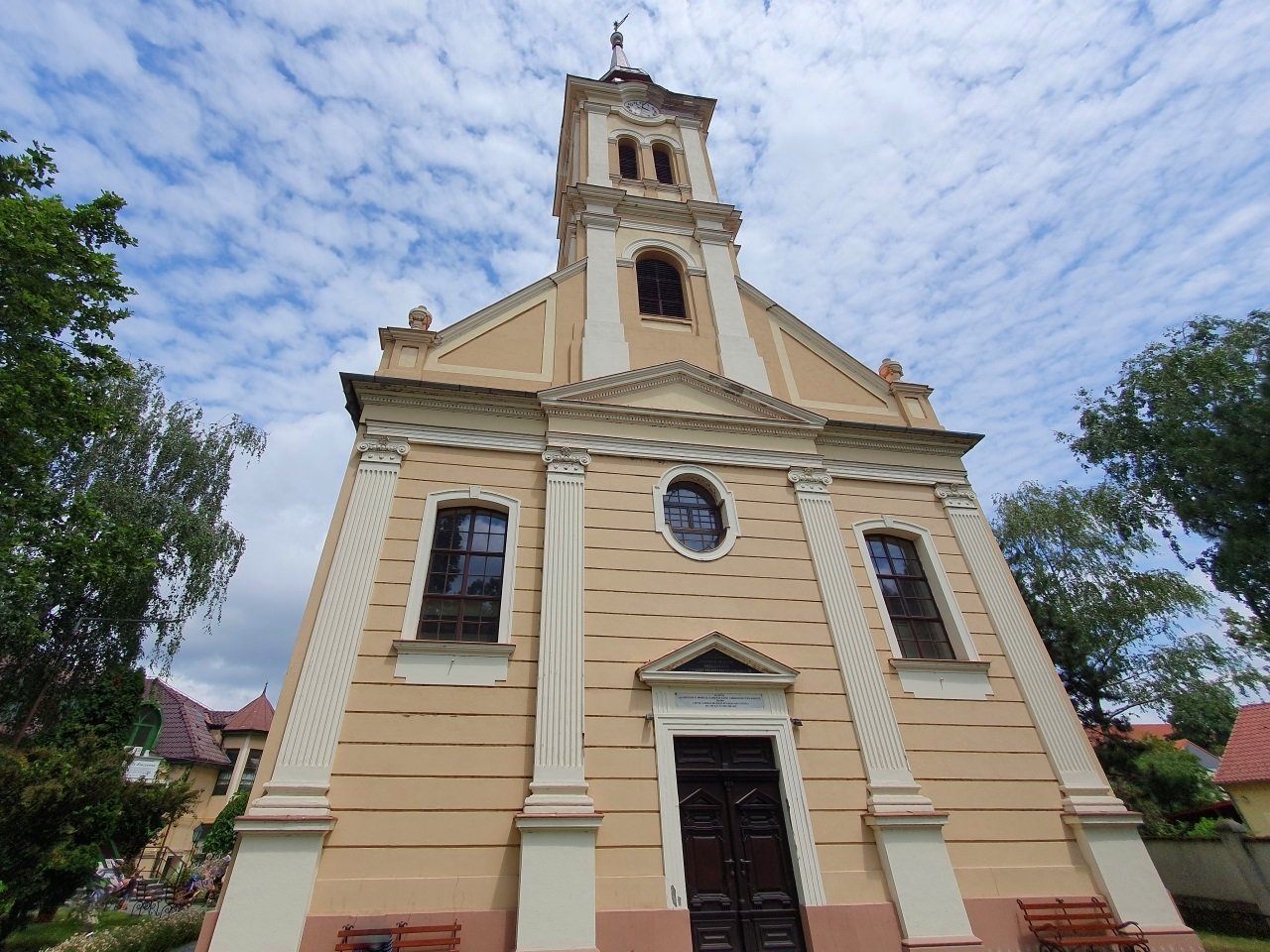
The Reformed Church of Olosig. Next to it and in the backyard is the St. Bridget of Sweden Church, the oldest church in Oradea still standing today (built in 1693).
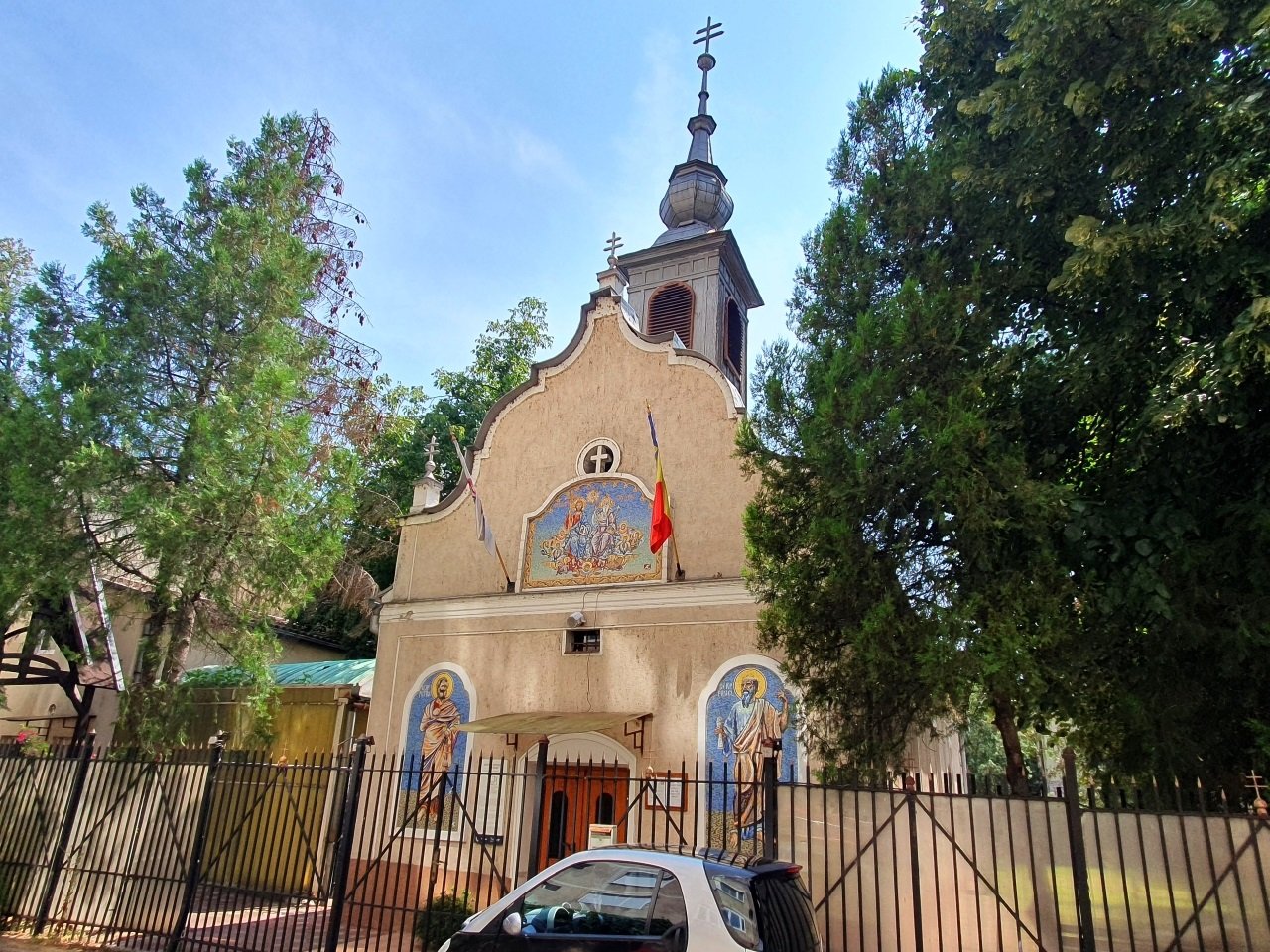
Originally a Catholic Church, it was taken over by the Orthodox Church in 1948 and remained Orthodox ever since.
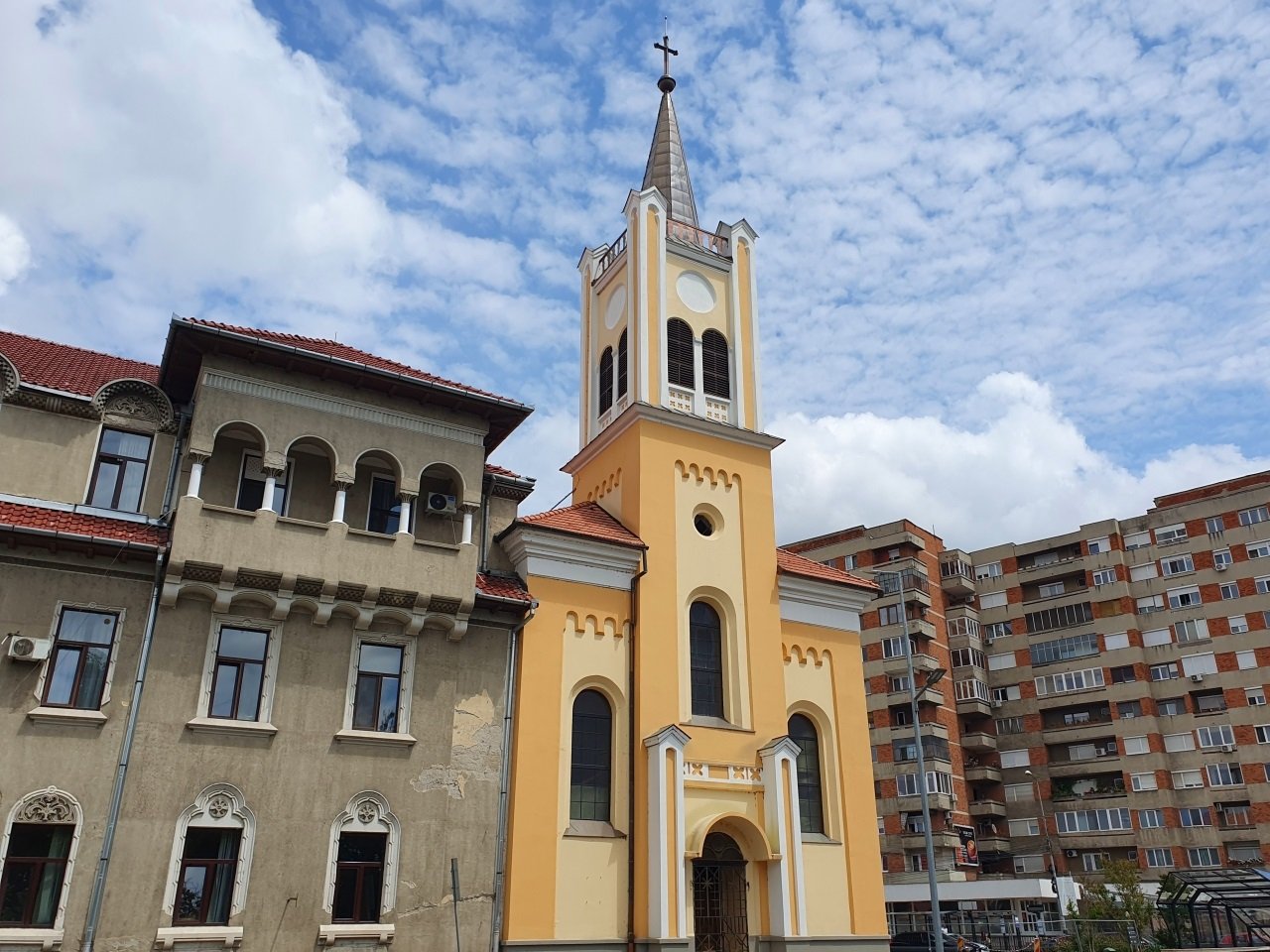
The St. George Greek Catholic Church (former Seminary Church), built in 1858 in the romantic style. As you can see in the background, the communist blocks are beginning to squeeze the spiritual past, and replace it with the darkest period of modern Romania, a period, paradoxically, still regretted today by many…
The Churches of Oradea
